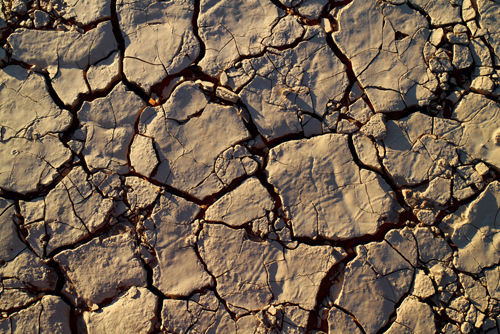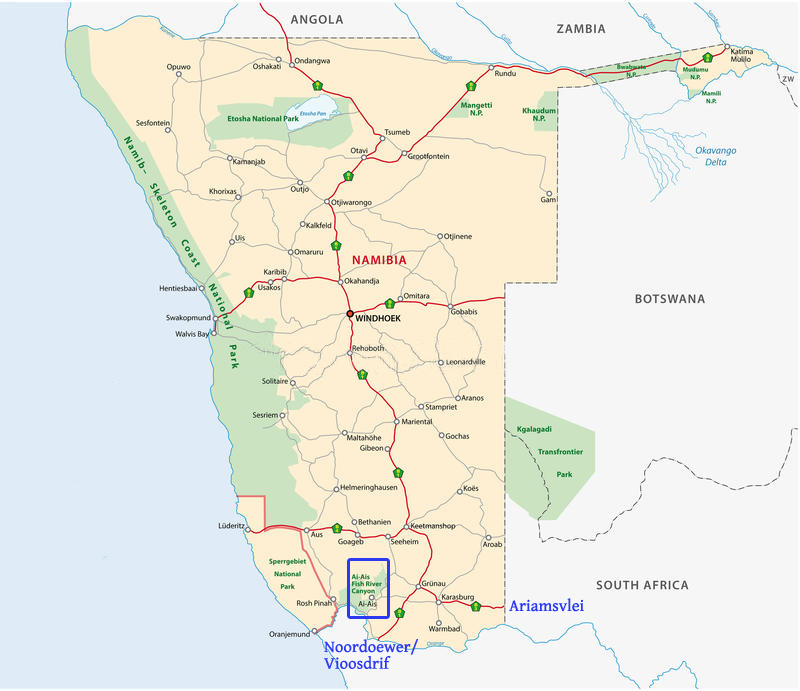
When to Hike
Fish River Canyon
Read more..
In the far south of Namibia is the Fish River Canyon, the canyon is approx
160km (100miles) long and the river it is named after, the Fish River,
is 650km long making it Namibia's longest river.
The river flows intermittently, usually flooding in late summer and when
it ceases to flow it becomes a chain of long narrow pools on the sandy
rock-strewn floor of the chasm where hikers can enjoy the refereshing pools as they hike the famous Fish River Canyon Hike.

Read more..

Read more...

Read more...

Read more...

Read more...

Read more...

Read more...

Read more...

Read more...

Read more...

read more...

Read more...

read more...

Read more..

At the lower end (south) of the Fish River Canyon, the hot springs resort
of Ai Ais provides an oasis in the desolate rocky wastes with Ai Ais Resort
offering rooms and camping. At the north is where the Fish River Hiking
trail starts and this is where Hobas Camp is located. The canyon is part
of a Nature Conservation Park. The gate is situated at the restcamp Hobas.
From there, you have to drive another 10 kilometres to the actual Canyon
which offers a stunning view of "Hell's Bend".
The Fish River Canyon has become a popular hiking destination. However,
hikes require good physical health and should only be undertaken during
the cooler winter months (between May and September).
A permit must be obtained. The hike is 86 km in length and takes about
5 days.
Please note though the hike down into the canyon into Hells bend from Hobas is only available as part of the 5 day hike

Distances to Ai Ais Fish River Canyon:
Aus: 340km
Luderitz: 465km
Winhoek: 762km
Sesriem: 620km
Noordoewer/Vioosdrif border post: 125km
Ariamsvlei Border post: 260km
Cape Town South Africa: 800km
Johannesburg South Africa:1250km
Upington South Africa: 420km
Springbok South Africa: 242km
Ai Ais to Hobas Camp: 68km
Ai Ais to Hellsbend Viewpoint (via Hobas): 78km
Hobas Camp to Hellsbend Viewpoint: 10km

There is limited choices of where to stay in Fish River Canyon and each one offers a different experience:
Ai Ais Resort and Spa The main attraction at Ai Ais Resort is the spa complex and lies at the southern end of the Fish River national park conservation area and marks the end of the Fish River hiking trail, there are rooms chalets and camping available Visit Ai Ais.
Hobas Camp Located at the start of the Hiking Trail at the north end of the Fish River Canyon. Accommodation at Hobas is made up mostly of camp sites, with a few bush chalets. Visit Hobas webpage
Canyon Village Situated in a private reserve only 20km from the Fish River Canyon Canyon Village offers Cape-Dutch cottages that look like a scene from a western film.
Canyon Lodge Offering character and charm, without the glitz, the lodge's down-to-earth attractiveness and homeliness is perfect for the rugged Fish River Canyon surrounds. Twin and Family rooms.
Canyon Roadhouse A great place to stay with great decor and full of character, great food and a friendly atmosphere, has rooms and a camping site.
There are also places to stay in Grunau (87km from Hobas) and on the road to Keetmanshoop.

The Fish River Hiking trail is one of the most famous hikes in Southern
Africa. The 86 km hike through the Fish River Canyon takes 5 days and
can only be untertaken by physically fit people, it takes 5 days with
absolutely no facilities, hikers are required to carry everything and
find whatever water you can in semi-permanent pools.
You have to book well in advance and be able to produce a doctor's certificate.
It is always a group hike.
A hike through the Canyon can and may only be done in winter, between
May and September. In summer, the temperatures in the gorge are
extreme; even in winter, conditions get quite hot. In the past, many accidents
and even fatalities have occurred, mainly due to heat stroke and heart
failure. The rescue facilities are limited; no helicopters are stationed
nearby and there is no cell phone reception in the Canyon.
The descent starts at Hiker's View, about 3 km north of the Main Viewpoint and takes almost an hour. Only one "emergency exit" leads out of the gorge near "Palm Springs", to which one usually arrives at on the third day. It is a very steep path and once you get to the top, you literally stand in the desert. The trail ends in Ai-Ais.

The Fish River canyon, situated along the lower reaches of the Fish River, is one of the most impressive natural beauties in the southern part of Namibia. It developed predominantly during the pluvial times - a rainy climatic epoch - many millions of years ago. With a depth of up to 550 metres, the Fish River Canyon is the second largest canyon in the world, before the Grand Canyon in America. The enormous gorge meanders along a distance of approx. 160 kilometres through the fissured Koubis massif all the way down to Ai-Ais. The canyon starts near Seeheim, is 161 kilometres long and ends at Ai-Ais.
Fish River is absolutely magnificent and breathtaking in its immensity.
The Fish River Canyon probably formed about 500 million years ago. However
was not only created by water erosion, but through the collapse of the
valley bottom due to movements in the earth's crust.
The canyon is part of a nature conservation park. The gate to this park
is at Hobas campsite and from here it is a further 10 kilometres to the
main viewpoint for the canyon which offers a stunning views. When you
arrive at the canyon, as you have no idea it is there. It drops vertically
by half a kilometre, out of a flat arid plateau without any warning. As
with most rivers in Namibia the Fish River is generally dry however in
the raining season (January to April) the river can become a raging torrent
Climate
The Fish River Canyon area has a typical semi-desert climate. During the
hot summer months (October - March) temperatures can rise to 48°C
during the day and cool to about 30°C at night. Relief from the heat
comes in short spells with occasional thunderstorms. The average annual
rainfall in the canyon area is 100mm. During the short winters, temperatures
can go below zero at night, but quickly pick up during the day to a moderate
20 to 28°C.
Wildlife
In the canyon you may encounter several species of mammals, such as wild
horses, Mountain Zebra (Hartman zebra), Kudu, Klipspringer, Leopard, Steenbok,
Baboon and Springbok. The most common rodents include mice, rats, dassies,
and dassie rats. Bird life includes surprises like Pelicans, Black Eagles,
Fish Eagles, Kingfishers, Lovebirds, Wild Ostrich and various species
of waterfowl and wading birds, such as Herons.
Reptiles and insects are in abundance and you may come across huge Leguan
lizards; snakes (such as Cape Cobra, Black Spitting Cobra, Puff adder
and Horned adder) as well as Geckos. Various locusts, butterflies and
moths are also present. In the natural pools of the Fish River are found
an abundance of fish, such as Barbled catfish and Yellow fish.
Vegetation
Namibia's national tree, the Aloe dichotoma or Quiver Tree is mostly found
in the south of the country. There are beautiful examples of these in
the Fish River Canyon. The trees can reach an age of about 300 years,
and flowering occurs during wintertime from May to July.
Other plants include various species of succulents, such as the very poisonous
Melkbos. All plants are well adapted to the semi-desert environment and
can survive severe droughts of up to 5 years.